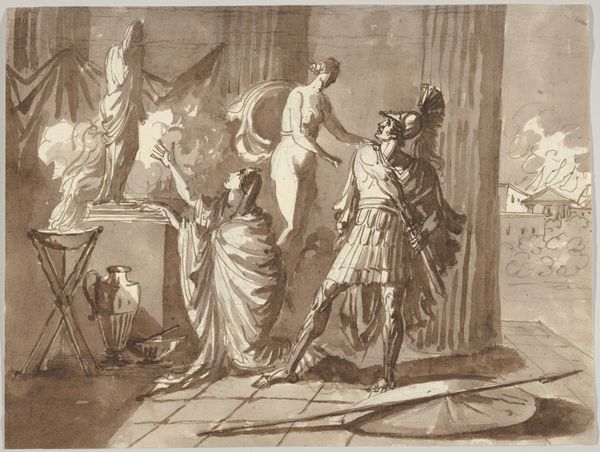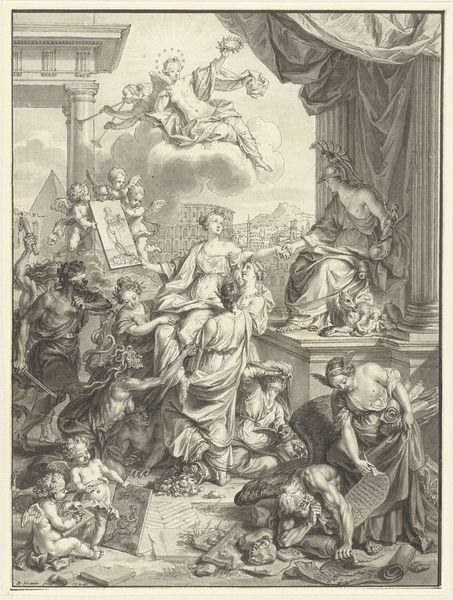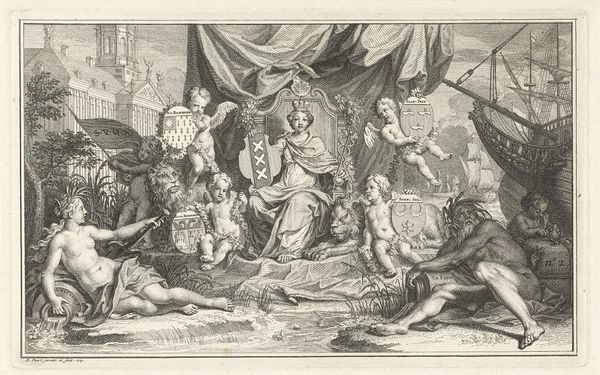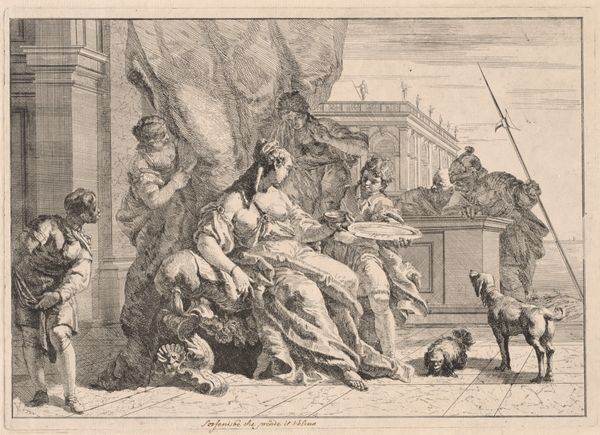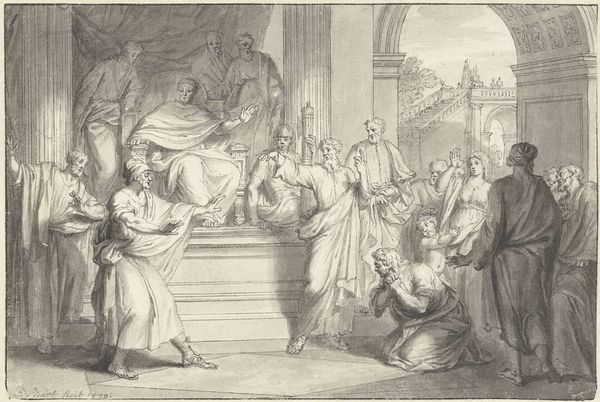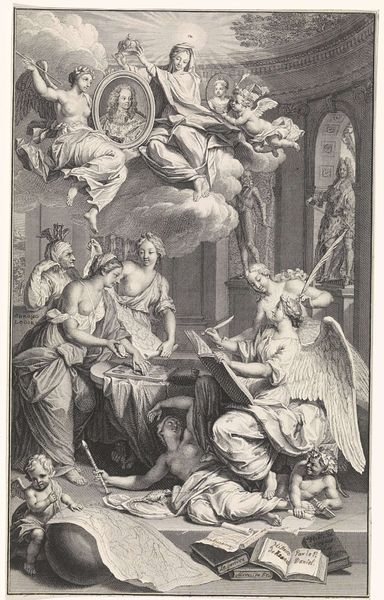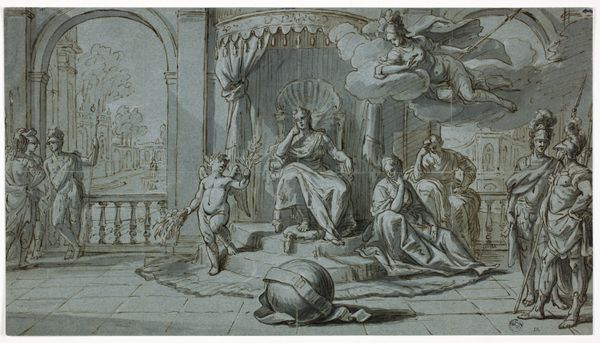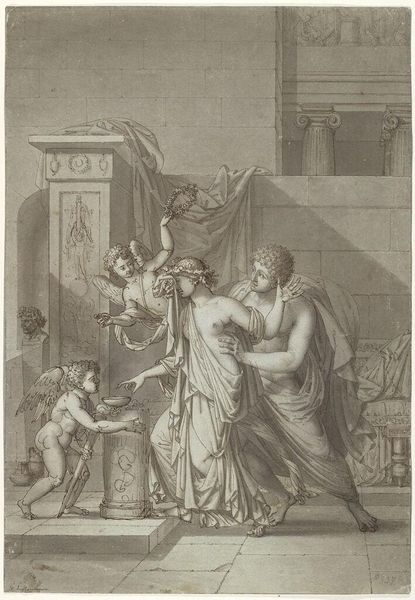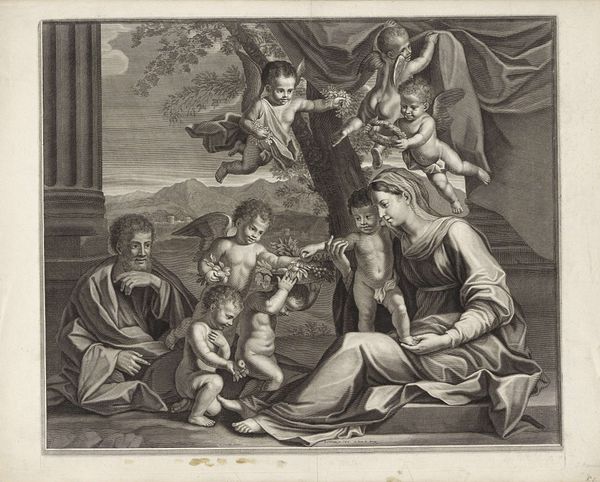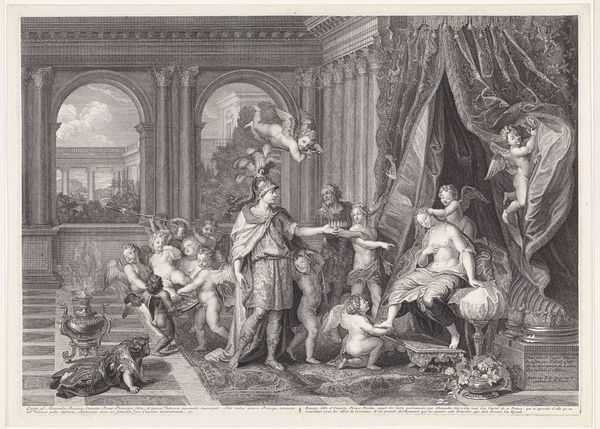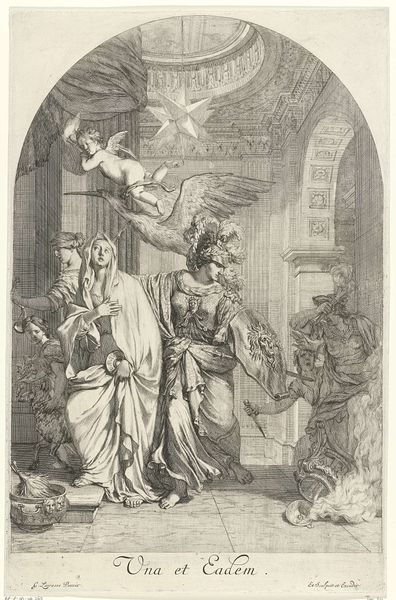
drawing, ink
#
drawing
#
ink drawing
#
baroque
#
pen illustration
#
pen sketch
#
figuration
#
ink
#
genre-painting
#
history-painting
Dimensions: height 236 mm, width 328 mm
Copyright: Rijks Museum: Open Domain
Curator: Oh, the swirling chaos! The whole thing has the energy of a fever dream—that scratchy ink, all those figures packed together... I feel a bit breathless just looking at it. Editor: This drawing, made sometime between 1659 and 1700, is titled "Voorstelling uit het leven van een heilige," or, "Scene from the Life of a Saint," by Godfried Maes. What grabs me immediately is the drama, and of course, wondering which saint we're witnessing. Curator: Right? Everyone seems to be gesturing wildly, fleeing, or plotting something dastardly. Look at the details though. A running dog! Those tiny faces carved into the pedestal on the left! Someone is making this quite playful, not too dour despite the seriousness. Editor: I see the tension you are drawn to. I interpret it through a socio-political lens: this saint must have triggered something radical. Consider that Maes lived during a time of intense religious and political upheaval in Europe; the work is rendered in pen and ink, and it seems very intent on capturing the theatrical Baroque aesthetic popular at that time, full of dynamism. Curator: It’s like a stage set—the enthroned figure in the background certainly adds to that feeling, a powerful ruler in judgment. Yet, who is the protagonist? The saint appears almost serene amidst the commotion, yet there is the dog attacking at his feet... Editor: Indeed. Think of this scene as an allegorical contestation, where traditional power structures, represented by the enthroned figure, come into conflict with the revolutionary potential embodied by the saint and perhaps the marginalized or demonized. It seems almost deliberately ambiguous in how it invites a queer reading. Curator: Oh, I hadn't considered that! It's tempting to see a hero standing defiant, yes, especially with all those pleading figures reaching for him or away from him, but queer reading opens another point. Maybe the work resists clear categories or established interpretations—that's the excitement. Editor: Exactly. It speaks volumes about how much context shapes what we perceive and even the urgent need for decolonization in history and museum display—not to mention that holy figures often disrupted heteronormative structures just by taking vows of celibacy. Curator: Absolutely! This piece now feels less about straightforward narrative and more about the charged space between tradition and upheaval. I keep wanting to redraw the thing just so that it feels stable and centered, to ease all the emotional chaos! Editor: Ultimately, viewing art like this asks us not just to observe history but to interrogate the very systems of power that shaped it—systems that still resonate today. Thank you for your thoughts.
Comments
No comments
Be the first to comment and join the conversation on the ultimate creative platform.
